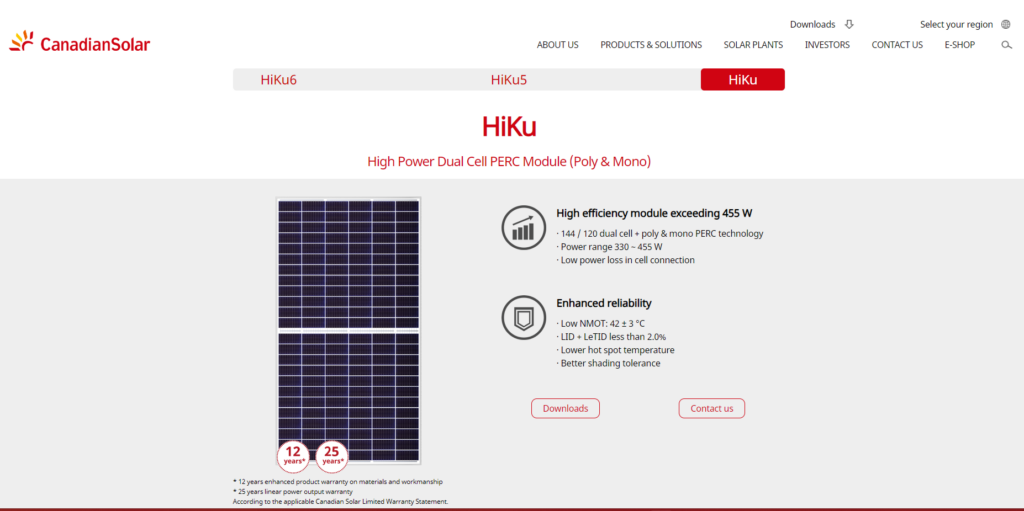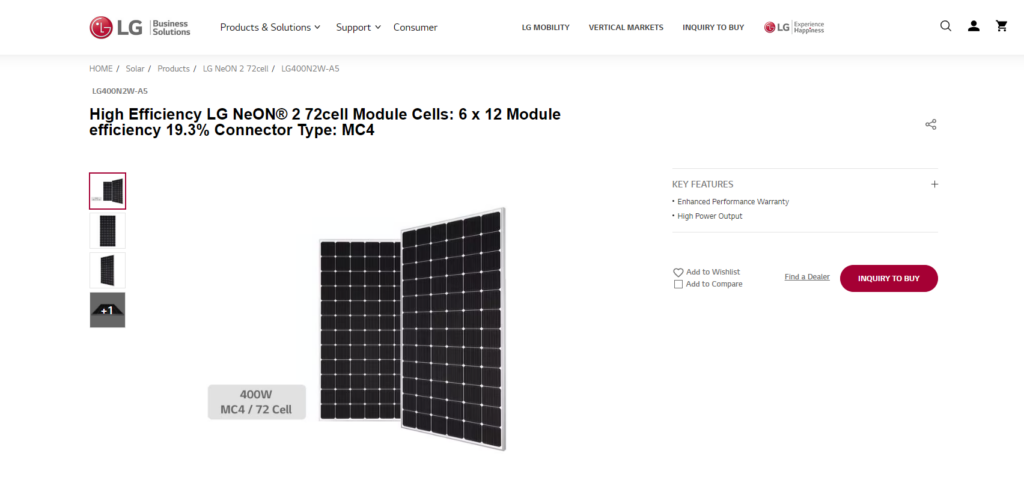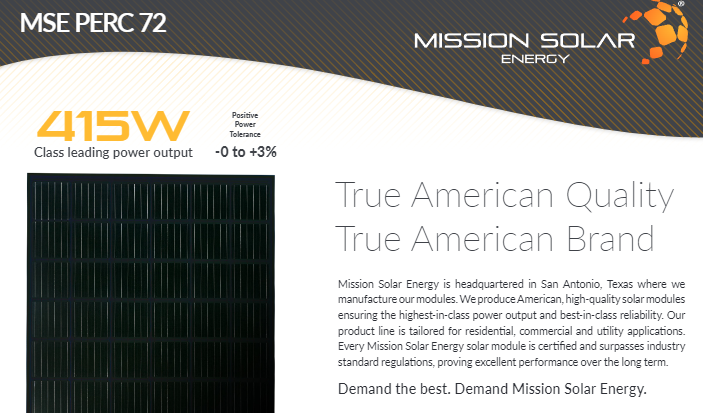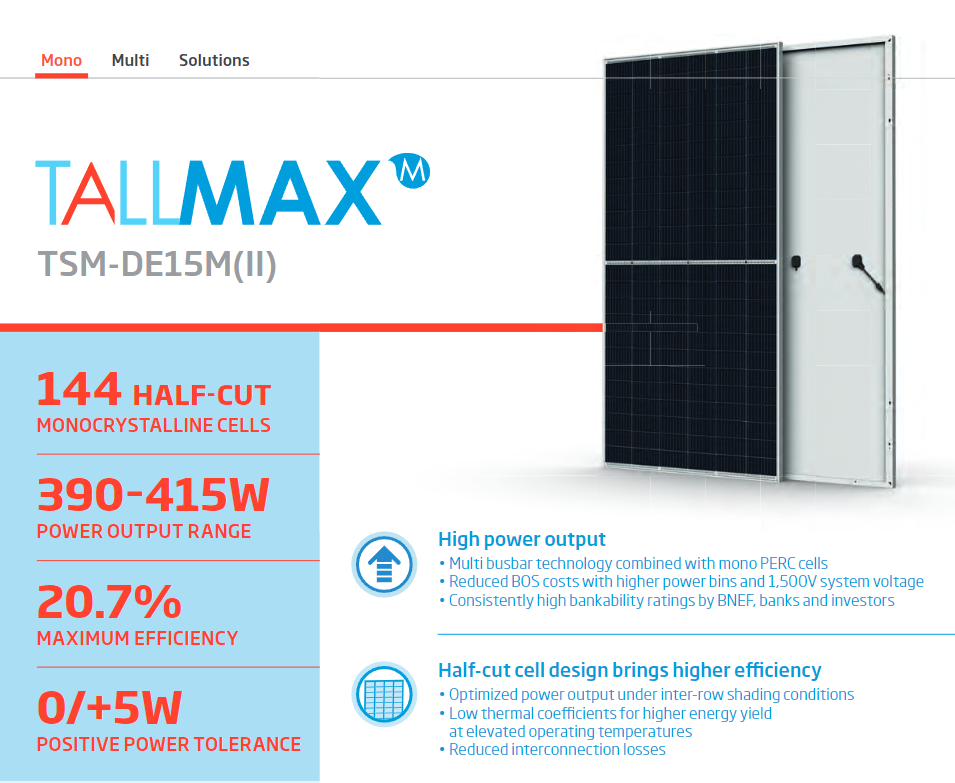As the world continues its journey towards sustainable and cost-effective energy solutions, solar panels have emerged as a compelling alternative to traditional power sources. These eco-friendly powerhouses not only cater to our energy needs but also align seamlessly with the contemporary demand for renewable, affordable power. This guide delves deep into the world of watt solar panels, focusing on their importance, functionality, and critical factors to consider when choosing a system suitable for your specific needs. Let’s take a journey through the world of 400-watt solar panels, a common choice for residential solar installations, and understand why they have become such a crucial part of our energy landscape. Solar panels operate by harnessing the power of the sun and converting it into electricity. The capacity of a solar panel is determined by its wattage, indicating the amount of power it can produce under optimal sunlight conditions. For instance, a 400-watt solar panel, under ideal conditions and receiving four hours of peak sun daily, can produce 1.6 kWh of power daily or about 584 kWh per year. By contrast, the average annual electricity consumption for a U.S. residential utility customer was over 10,600 kWh in 2021, according to the U.S. Energy Information Administration. Consequently, a network of these 400-watt solar panels can significantly offset a substantial portion of a typical household’s energy usage, depending on the total number of panels installed.
Solar panels offer a multifaceted approach to addressing global energy challenges. They enable a transition away from fossil fuel dependency, lowering our carbon footprint. They provide an opportunity for households to become energy independent, and over time, they offer considerable cost savings. This makes the 400-watt solar panels, which strike an excellent balance between efficiency and affordability, a popular choice for many homes. Investing in a solar panel system necessitates a careful appraisal of several key factors. Foremost, it is vital to determine the energy needs of your household or business. The energy demand will influence the necessary wattage of the solar panel system you choose. For instance, if you aim for a 10kW system, you would require 25 panels of the 400-watt variant.
The efficiency of the panels, representing the proportion of sunlight that gets converted into usable electricity, is another crucial element. Panels with higher efficiency might cost more upfront, but they yield more energy and require less space, offering a better return on investment over time. The reliability of the brand also plays a significant role. Brands with robust warranties and positive customer reviews generally offer durable systems that stand the test of time. Local weather conditions and the amount of daily sunlight your location receives will also impact the panel’s performance. For example, charging a 200Ah 12V battery with a 400-watt panel under peak sunlight conditions takes approximately 5.25 hours. Lastly, installation and maintenance costs, as well as available incentives or subsidies, should be taken into account.

Canadian Solar’s HiKu Mono PERC series exemplifies innovation with its blend of high wattage and excellent efficiency. The introduction of PERC technology elevates these panels’ light absorption, facilitating superior performance. If your priority is obtaining considerable power output without straining your budget, these panels emerge as an enticing choice.

LG’s LG400N2W-A5 panel is a testament to the brand’s commitment to reliability and high power output. The panel promises 400W power and an efficiency rate of 19.3%, an optimal choice for those who appreciate a reliable brand that doesn’t compromise on power output.

Advancing from its predecessor, the LG405N2W-A5 offers enhanced wattage and efficiency. The design of this panel ensures that it remains resilient even in challenging light conditions, contributing to steady power output.

Mission Solar’s MSE SX6W presents an intriguing offer with its versatile wattage range and consistent efficiency. It comes with an appealing positive power tolerance, implying it can exceed its rated power by up to 3% when conditions are ideal.

Mission Solar’s MSE SX6Z, akin to its sibling, offers an expanded wattage range, a perfect pick for those seeking increased power. Upholding the brand’s reputation, it delivers consistent performance with a 19.3% efficiency rate.

The Silfab Solar SIL-400 NU couples an aesthetic design with robust power output and notable efficiency. Its advanced engineering promotes superior performance and resilience, ensuring a trustworthy, enduring energy solution for users.

The A Series Residential panels from SunPower excel with an unmatched efficiency rate of 22.5%, the peak in this compilation. Leveraging Maxeon® solar cell technology, these panels offer enhanced sunlight conversion, making them an ideal investment for homeowners seeking premier performance.

Trina Solar’s Tallmax TSM-DE15M(II) boasts a wide wattage range and an impressive efficiency rate. The panel’s durable design and dependable performance make it adaptable for various applications, from home-based setups to larger, utility-scale installations.
In the realm of solar power, the wattage of a panel represents its potential power output under optimal conditions. Specifically, a 400W solar panel is designed to generate 400 watts of power for each hour of peak sunlight. However, real-world factors such as geographical location, panel orientation, temperature, and weather conditions can impact this output. For instance, in a region with high levels of sunlight and appropriately positioned panels, you can anticipate a daily yield of approximately 1.6kWh to 2.4kWh. Conversely, in less favorable conditions, this output may diminish. Equally significant is the efficiency of a solar panel, which is the percentage of sunlight captured and converted into usable electricity. A panel with high efficiency is capable of generating more power from the same amount of sunlight, making it particularly suitable for installations with limited space.
However, it’s worth noting that the efficiency of 400W solar panels can vary across brands. For example, SunPower’s A Series Residential panel stands out with an efficiency rate of 22.5%. Meanwhile, other reputable manufacturers like LG and Canadian Solar offer panels with efficiencies within the 19-20% range. Although SunPower’s panel can theoretically yield more electricity from the same sunlight exposure, it’s essential to balance this advantage against other critical factors such as cost, warranty terms, and installation requirements when selecting the perfect panel for your needs.
A well-optimized 400W solar system hinges not only on the panels but also on the battery storage, which safeguards the reliability of your energy supply. The number of batteries needed depends on your system’s voltage and the amount of stored energy you require. For example, a 12V system with a daily energy usage of 1.6kWh would typically require a 200Ah battery. Keep in mind that adequate storage ensures your solar installation’s effectiveness and resilience during low sunlight hours.
Panel effectiveness is driven by factors like efficiency, durability, and the quality of installation. Selecting panels from reliable brands with high efficiency percentages and robust warranties can greatly enhance your system’s performance over time.
As our exploration of the eight best 400-watt solar panels concludes, we find ourselves standing at the intersection of sustainable living and technological advancement. The journey towards a renewable energy future is as much about the choices we make today as it is about the innovation and creativity propelling us forward. With their impressive power output and efficiency, these 400-watt solar panels underscore the promise of solar energy as a viable, cost-effective, and sustainable alternative to traditional energy sources. Our exploration has underscored the importance of understanding your unique energy needs and aligning them with the specifications of various solar panels available on the market. We’ve delved into factors such as power output, panel efficiency, brand reliability, and installation specifics, including battery storage requirements. These parameters are not standalone aspects but parts of a well-rounded perspective that’s necessary to navigate the solar panel market confidently.
Power output, embodied by the wattage of the panel, is a representation of the panel’s potential performance under optimal conditions. However, the real-world effectiveness of the panel relies on a range of factors from geographic location, and installation angle, to local weather conditions. An appreciation of these dynamics allows you to evaluate the potential daily yield of your chosen solar panel, hence aligning your expectations with practical outcomes. Panel efficiency, which refers to the percentage of sunlight converted into usable electricity, determines how effectively your chosen panel will perform, particularly in installations with space constraints. But remember, efficiency is just one part of the equation. When you consider different panels, it’s important to balance the allure of high efficiency against other factors such as cost, durability, warranty terms, and installation requirements. Similarly, the battery storage of your 400W solar system is a key variable in the overall performance of your setup. Ensuring you have adequate storage not only guarantees a steady power supply during lower sunlight hours but also enhances the durability and long-term effectiveness of your solar installation.
Lastly, the brand’s reliability and warranty terms are essential considerations that speak to the durability and resilience of your chosen panels. High-quality panels from reputable brands are more likely to offer robust performance over their lifespan, providing you with the peace of mind that accompanies a secure investment. As we move forward, it’s worth noting that the advancement in solar technology and the declining costs of installation herald a bright future for solar energy. So whether you’re a homeowner seeking to reduce your carbon footprint or a business aiming for energy independence, 400-watt solar panels offer a compelling step towards achieving your green energy goals. At the end of the day, the journey toward a sustainable future is a shared responsibility. As consumers, we have the power to drive demand toward renewable energy sources. By doing so, we not only promote the development of green technologies but also pave the way for a future where sustainable, clean energy is within everyone’s reach. As we explore the potential of 400-watt solar panels, we’re not just talking about an investment in solar power; we’re investing in the future of our planet.
A 400-watt solar panel can power various devices, from household appliances like laptops, lights, and small refrigerators to outdoor equipment like a camping setup. However, the exact number of appliances or devices a single panel can power depends on the energy demand of each item and the amount of sunlight the panel receives.
The number of 400-watt solar panels required for your home depends on your average electricity usage, which you can usually find on your energy bill. For example, if your household uses around 10kWh per day, you would need roughly 6 to 7 solar panels, assuming optimal sunlight conditions for about 5 hours a day. However, the actual number may vary depending on local sunlight availability and system efficiency.
A typical 400-watt solar panel measures about 6.5 ft by 3.25 ft. When calculating the space needed for installation, remember to factor in additional room for mounting equipment and access for maintenance.
Most solar panels, including the 400-watt variety, have a lifespan of around 25 to 30 years. But this doesn’t mean they stop producing electricity after this period; it merely indicates that their energy production declines by what’s typically specified as the ‘performance warranty’, often around 80% of the original output.
Several key factors need to be considered: the power output and efficiency of the panel, the brand’s reputation and warranty terms, the cost of the panel, and installation considerations such as the orientation and tilt angle for maximum exposure to sunlight. Also, keep in mind your local weather conditions and the amount of daily sunlight your location receives, as these will impact the panel’s performance.
Solar panels are generally low-maintenance. They may require occasional cleaning to remove dust, snow, or bird droppings that could affect their efficiency. While rare, there might be repair costs if a component of the solar system fails. Most reputable manufacturers offer long-term warranties that cover many potential issues.
The amount you save depends on several factors such as local electricity rates, the cost of the solar system, available financial incentives, and the amount of sunlight your location receives. Generally, solar systems can significantly reduce or even eliminate your electricity bills, leading to substantial savings over the life of the system.
Stay a while and read more posts like this
In recent years, Europe has witnessed a remarkable surge in the adoption of solar panels, marking a pivotal shift towards renewable energy. Data from the...
Renewable Energy, Solar Energy, Solar Energy Basics, Solar Technology
“Unlock the Truth: Get the Facts on Solar Energy!” Introduction Solar energy is becoming increasingly popular as a renewable energy source, but there are...
Imagine a world where you’re able to cut your monthly energy expenditure substantially. A reality where your home isn’t reliant on finite,...